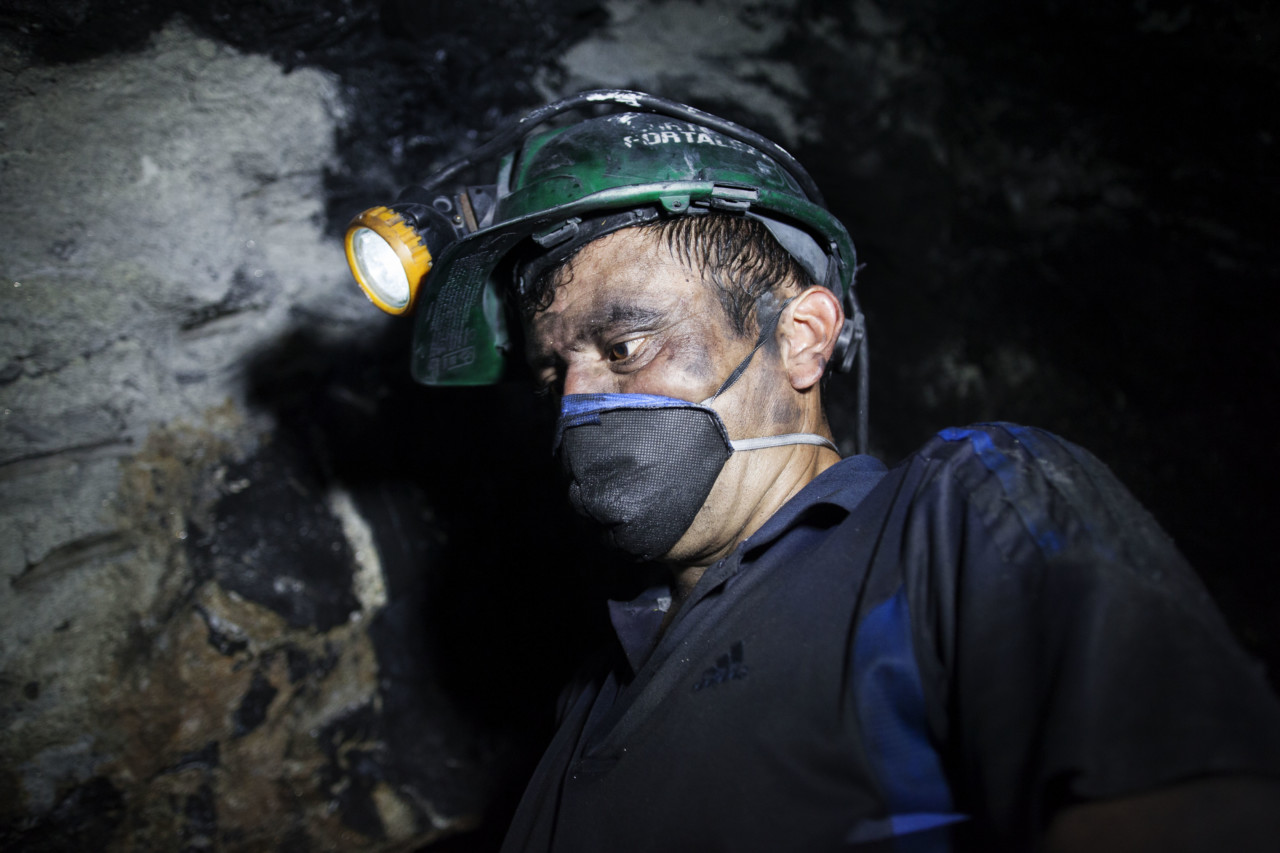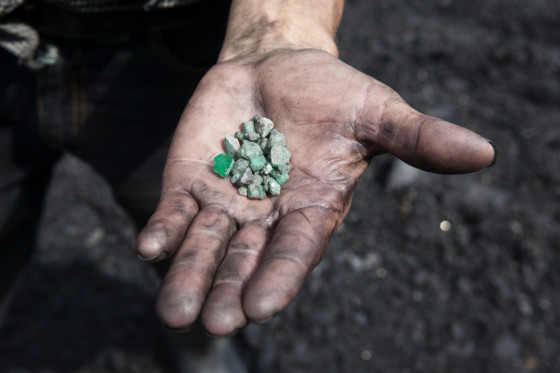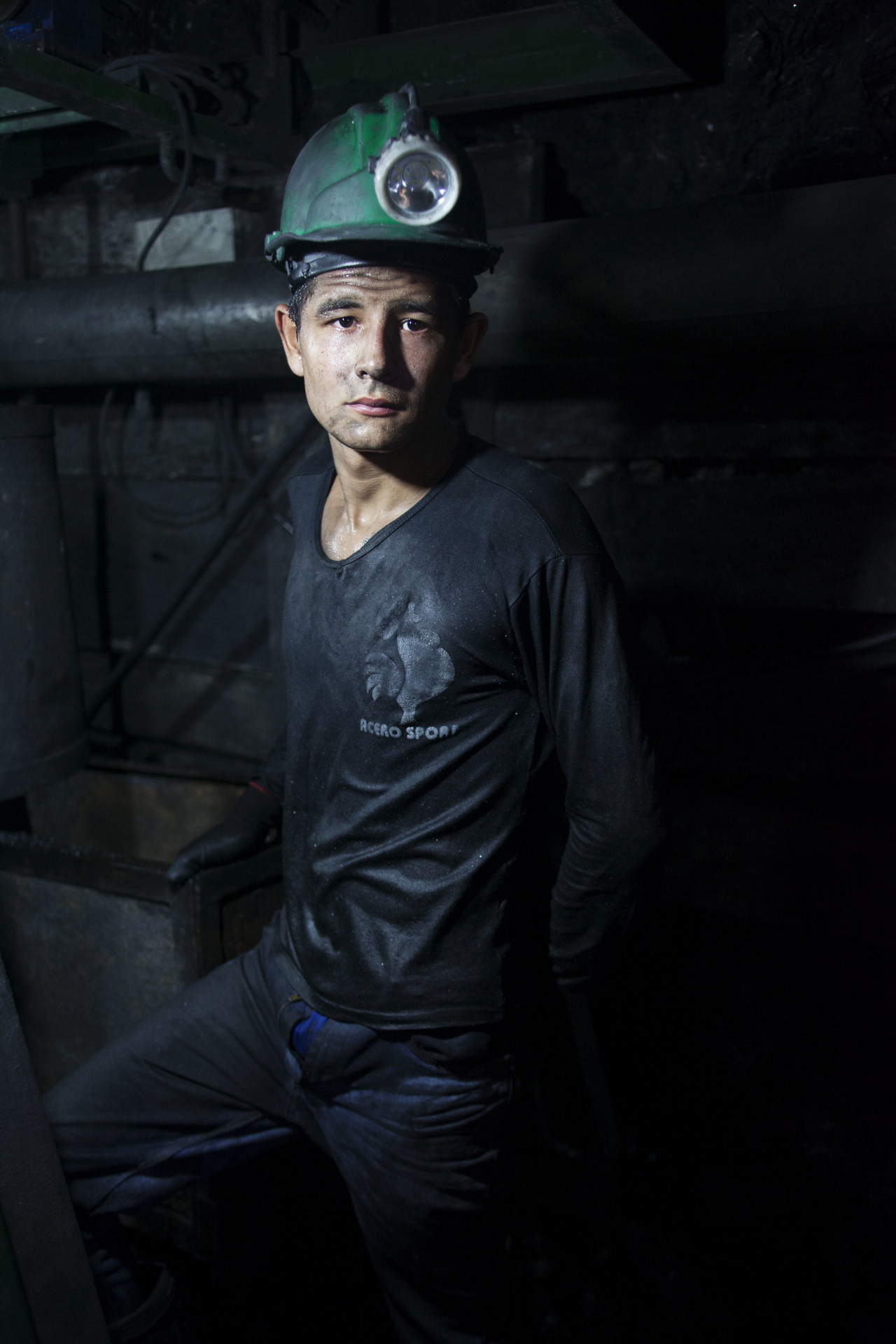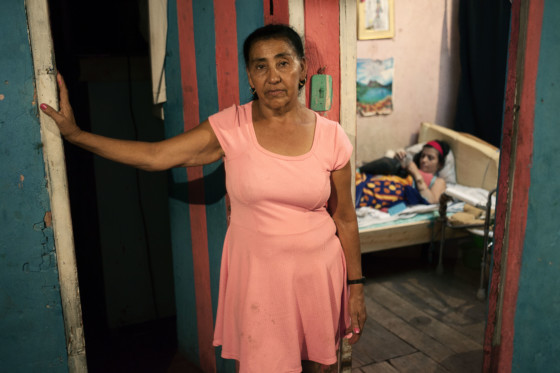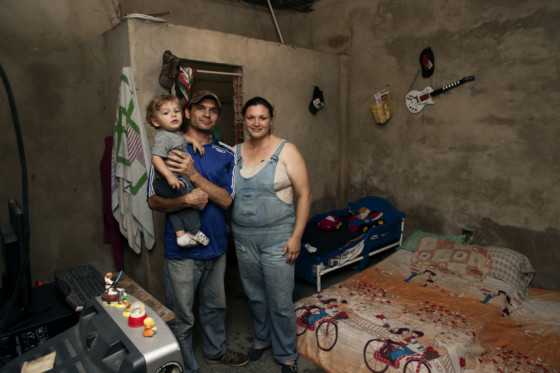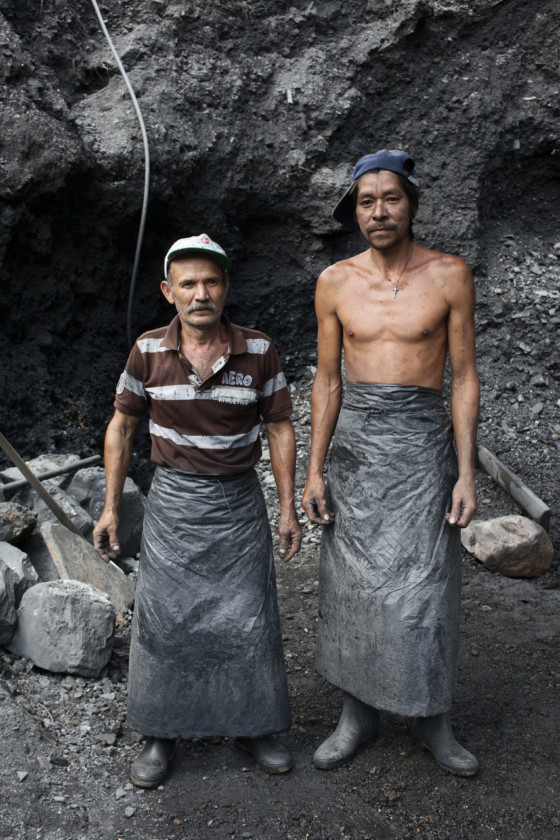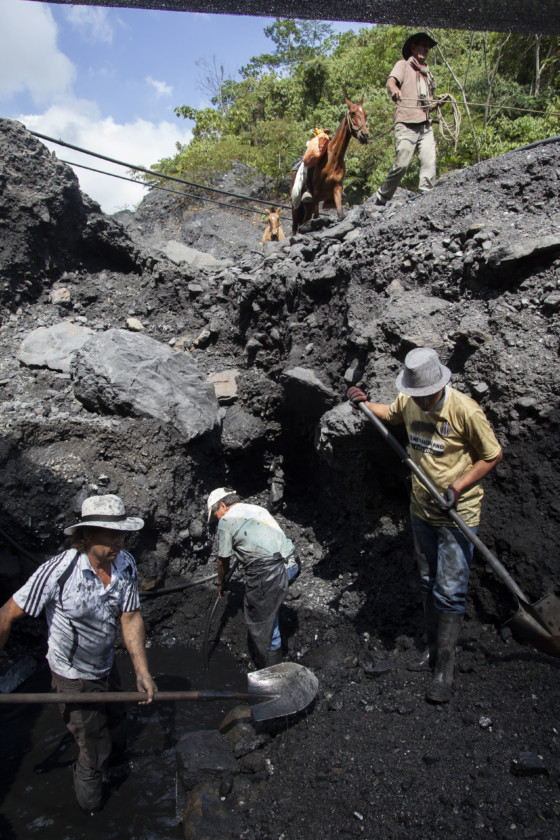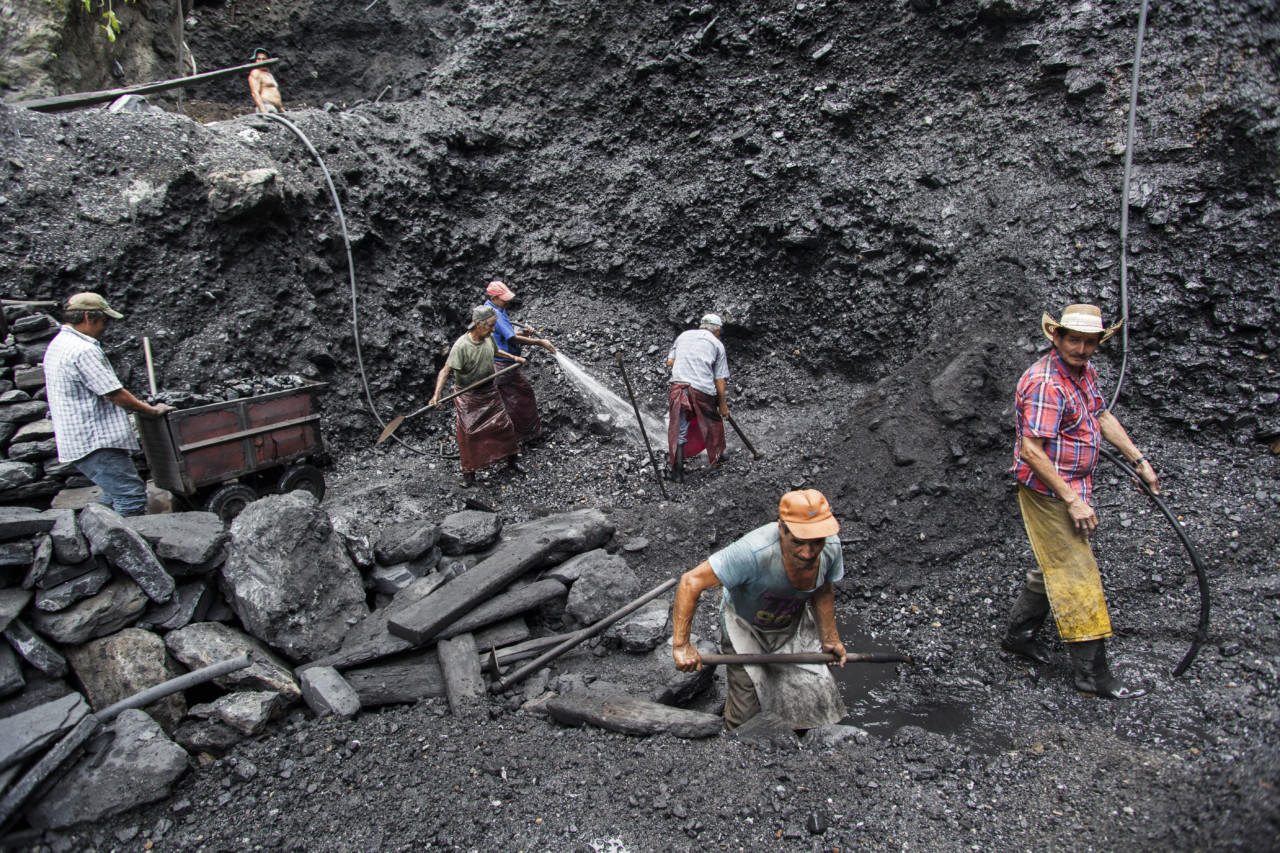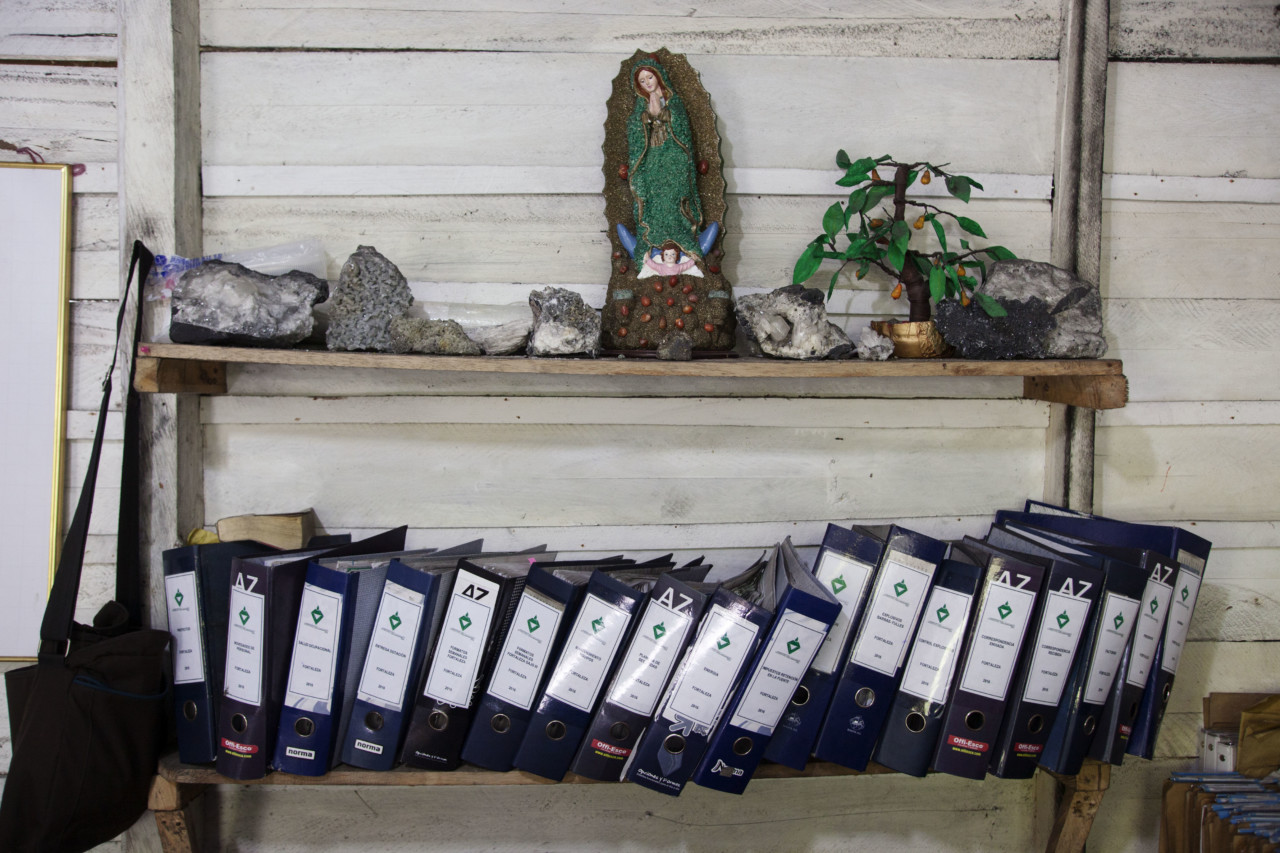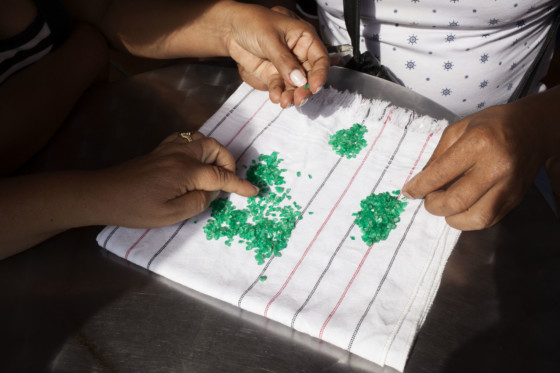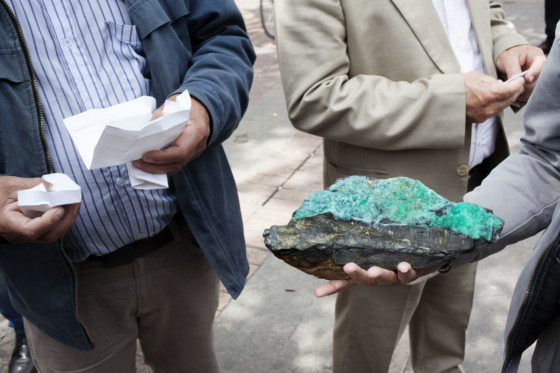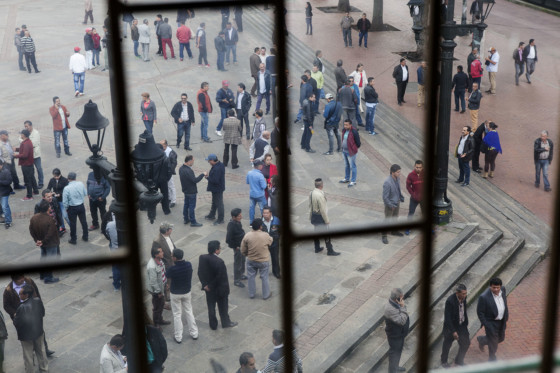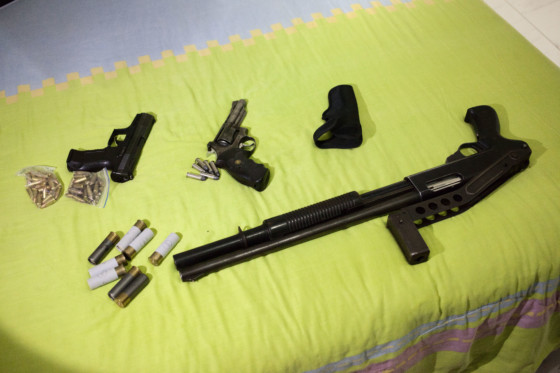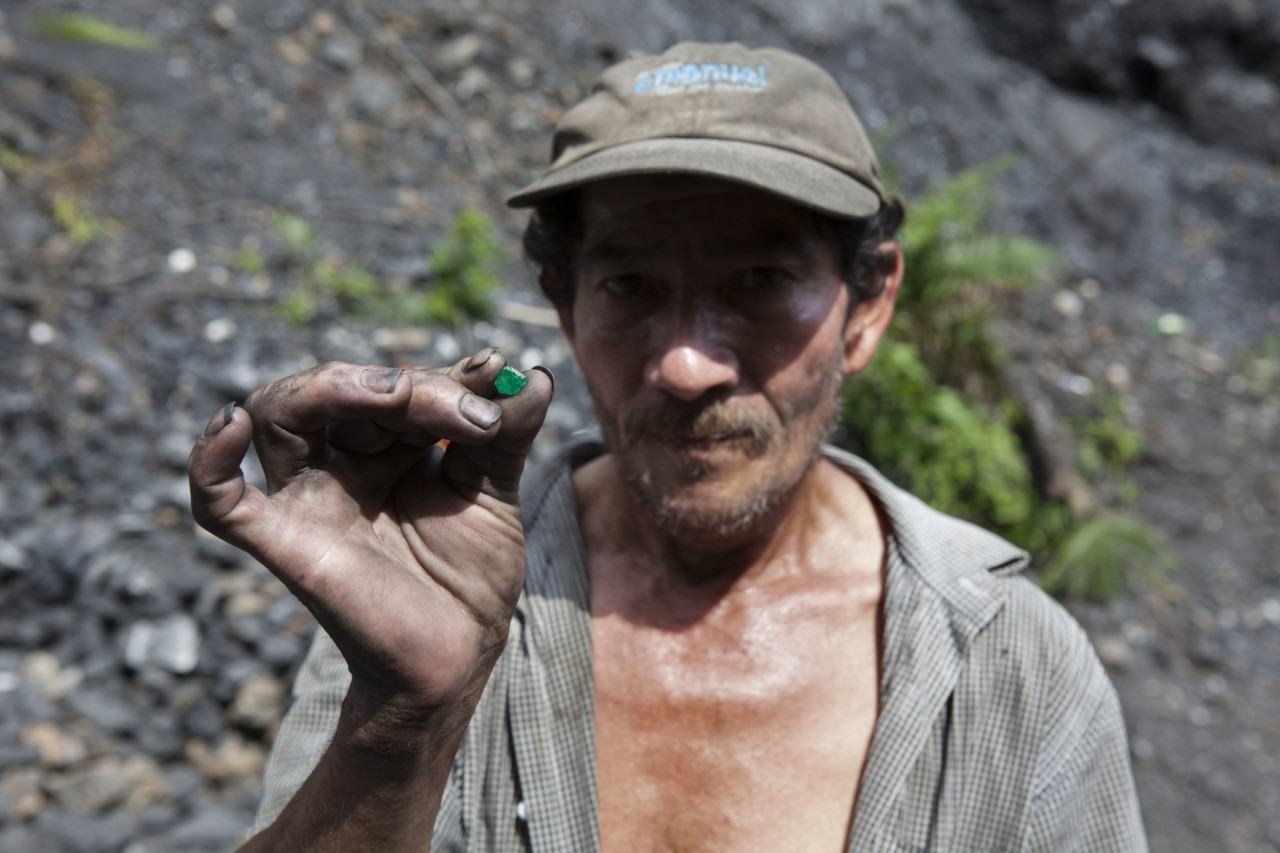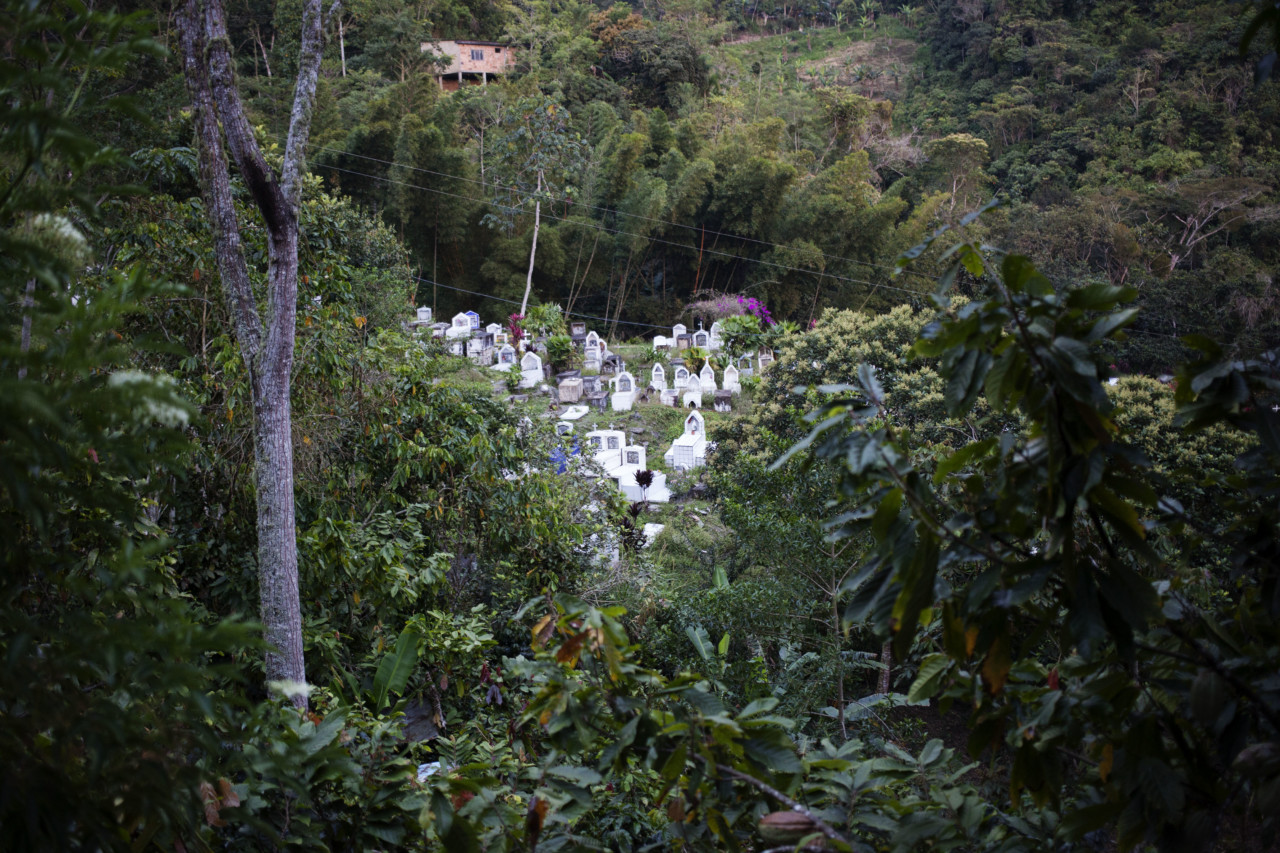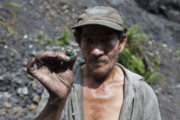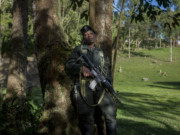Tracing the Green War
Patrick Zachmann explores the highly guarded world of Colombian emerald mining
In early 2017, Patrick Zachmann travelled to Colombia with anthropologist Nataly Camacho to explore the emerald mining trade. Here, Camacho writes about the trip into the mysterious and frequently dangerous world.
Thanks to their intense colour, size and brightness, Colombian emeralds are known for being the most beautiful in the world. It is not unusual to see them displayed in Europe or North America, combined with diamonds and other precious stones in pieces of fine jewellery. However, the conditions of their exploitation are less attractive: violence, war, poverty, misfortune and bad luck could all define the emerald world.
We wanted to discover the hidden part of the Colombian emerald’s mythical universe; from the mining extraction to the secured laboratories in Bogota, where stones are polished, and also addressing the traders, who buy and sell directly in the street, or off site.
The first part of this photographic documentary took place in the Boyaca region, where most of the mines and the villages of Muzo and Quipama can be found. In the 1980s and 90s, in this exact place, a ‘narco’, Gacha, known as ‘El Mexicano’, who was linked to the Medellin cartel and Pablo Escobar, started a terrible war, later called the ‘Green War’, with the two most influential families in the emerald trade, led by Victor Carranza et Gilberto Molina. This war caused more than ten thousand registered deaths, and thousands more went urecorded, bodies drawn into the river running alongside the mine of Muzo and Quipama, the ‘Río Minero’.
Gacha and his one-thousand-men army surrounded the Quipama village, where Carranza and Molina were entrenched. The only survivors were the ones who decided to remain in the village despite the long years of siege. The airport built by Gilberto Molina in the Quipama was a link to Bogota. However, flying over the conflict by plane did not guarantee the survival of Gacha’s targets. Many assured us that it was safer to remain within the village than in the capital.
One member of the Molina family – we will name him Luis – remained hidden in Quipama, surrounded by his bodyguards, for a year and a half. This is probably the reason why he is still alive today. Thanks to his insight, we got access to the incredible and unknown story of the everyday life during a period that could be easily compared to the famous Medellin and Cali ‘narcos’ war.
These imges highlight the daily work in the mine, 80 meters below the ground, as well as the work of poor ‘guaqueros’- men and women coming from all over the country, to find fortune, with spades and pickaxes. They look for the precious stone in the river and its surroundings, as well as among the parcels left over by mining companies.
Traders from Bogota wander around the ‘guaqueros’. They come and buy the freshly found treasures, sometimes for a very low price. Once delivered in the capital, the stones are sold for at least twice their initial price. Urban legends about ‘esmeralderos’ having made money by stealing the ‘guaqueros’, and ‘guaqueros’ or miners getting rich following the discovery or the stealing of a stone, are often told.
Until the arrival of multinational companies, miners were not getting paid but ‘allowed’ to steal a few stones, under their manager’s supervision. In the zones controlled by multinational companies, miners are paid but the high security level within tunnels makes the stealing of stones almost impossible. In the other tunnels, we figured out that minors were not getting paid most of the time, or were getting a very low wage (140 USD monthly in the best cases), but were allowed to dig for themselves during a limited amount of time (30 minutes) if their team finds a rock potentially containing emerald. When lucky, their hard work is rewarded, otherwise, they are not paid for several months.
Our journey brought us to Bogota, where our guide has been one of the key characters in the Colombian emerald history: Laureano Correal, an associated owner of the Gachalá mine and the ex-chief of the Muzo mine exploitation, is a proper survivor of the green war. Laureano is 81 years old but has the vitality of a young man.
In Bogota, in addition to documenting the street market and tailors studios, we managed to photograph a brotherhood of ‘traders’ who, within a confined lavatory in a building in the centre of the city, showed us a set of six emeralds with of a total valued 500,000 USD, and a small sculpture of a horse made of emerald, valued at 50,000 USD. Through this photoessay, we aim to tell the story of the lives of minors, of ‘guaqueros’ or contemporary villagers, presenting an insight into the world of Colombian emerald mining. – Nataly Camacho.


